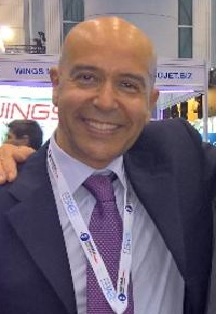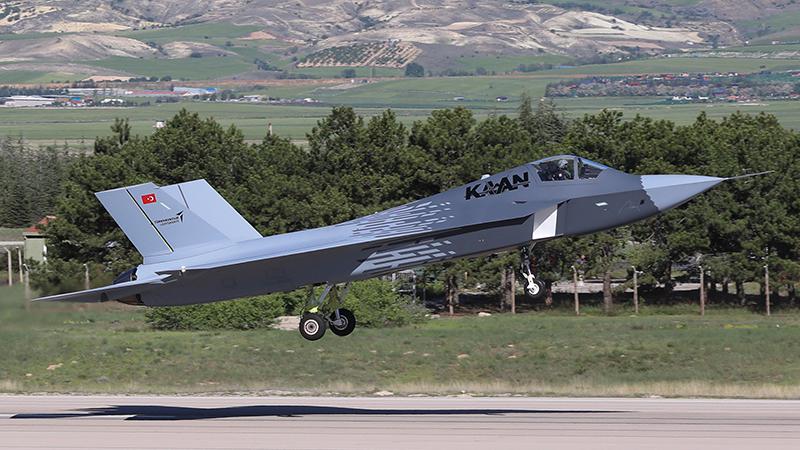See us at MRO Asia Pacific 2025
Turkeys Kaan Fighter Development Gains Momentum
Details
More Products & Services
Products & Services
Aerospace | Aviation Week Network
Aviation Week Network
https://aviationweek.com/themes/custom/particle/dist/app-drupal/assets/awn-logo.svg
Home - Aviation Group Marketing
Aviation Week Network
120 data points on over 156,000 commercial and business aviation aircraft, including military transports. Discover the most trustworthy resource for the complete aircraft history, plus ad hoc reports, month-over-month trend analysis and details on expected deliveries through 2050.
People

Andrea Rossi Prudente
Aviation Week Network

Anthony Lim
Aviation Week Network
Sales director

Becca Balmes
Aviation Week Network

Belinda Tan
Aviation Week Network

Brian Everstine
Aviation Week Network
Editor

Eddie Krankowski
Aviation Week Network
Assistant Manager, Tradeshows

erving dockery
Aviation Week Network

Lisa Tan
Aviation Week Network
Senior Marketing Manager

Mark Thomas
Aviation Week Network
Description
It can be challenging to get clarity on Turkey's combat aircraft plans. The Turkish Air Force plans to acquire new Lockheed Martin Block 70-model F-16s and potentially Eurofighter Typhoons, but government officials also express optimism about rejoining the F-35 Joint Strike Fighter program.
Amid all the decision-making facing the country's air force, there seems to be clarity around the Kaan, Turkey's indigenous fighter project.Manufacture for the next batch of Kaan prototypes now underwayInfrastructure for production and further development now readyGlobal 6000 business jet supporting sensor and system development
The Kaan program is at the heart of Turkish President Recep Tayyip Erdogan's vision to make Turkey a major defense supplier. A new batch of prototypes are being manufactured in a state-of-the-art final assembly line (FAL) complex that towers over the skyline of Turkish Aerospace's Industries (TAI) campus in Ankara.
Adjacent to the FAL facility is a program office where engineers have been polishing the design and finalizing the production process. Also nearby is a new wind tunnel complex and a paint shop where domestically developed low-observability paints and coatings will be applied to the aircraft; these will be tested on a new radar cross-section test range that is soon due to be operational.
This infrastructure, while cheap compared with developing a new combat aircraft, represents a statement of intent to press on and secure a level of national self-sufficiency, TAI's general manager, Mehmet Demiroglu, tells Aviation Week.
“Based on the threat assessments, [the Turkish Air Force] needs to keep the capability and readiness up to a certain level, whether it is with F-35s or with Eurofighters,” he explains. “But everybody knows that if you want to stay independent for the next 50-100 years, you must have your own [defense] equipment.”
TAI is leading the design and development of the Kaan, an indigenous twin-engine, fifth-generation combat aircraft that the Turkish Air Force plans to use to replace its F-16 fleet beginning in the 2030s.
The Kaan, similar to the Lockheed Martin F-22, has dwarfed every other indigenous aircraft that has emerged from TAI hangars. The company's literature lists a length of 20.3 m (66.6 ft.) and a maximum takeoff weight of up to 34 metric tons.
Like other low-observable combat aircraft, Kaan will carry its weapons internally in three payload bays—one under the belly and one adjacent to each air intake, as on the F-22. The aircraft will feature domestically developed avionics and sensors; TAI says that 80-90% of the aircraft is domestically sourced. The first components for Aircraft P1, one of six planned flying prototypes, are in the specially constructed jigs set up in the FAL. These will produce 18 major component assemblies that will be fitted together using laser alignment to produce a single Kaan. Two additional airframes are intended for static and fatigue testing.
“The focus is now on P1, P2 and P3,” Demiroglu says. Once operational, those aircraft will be heavily utilized, with the new prototypes “flying as often as possible, as long as possible and as high as possible,” he adds.
The prototype that has flown, known as P0, was originally developed as a demonstration platform to perform a hangar rollout, but the aircraft was later adapted to fly—although it has completed just two flights, the last on May 6, 2024 (AW&ST March 11-24, 2024, p. 36).
That aircraft is now largely used for ground testing, having proved the assembly process, but Demiroglu does not discount that P0 will fly again.
The next batch of prototypes and preproduction model aircraft will look very similar to the configuration of P0, “from a bystander's point of view,” Demiroglu says. The most noticeable external change will likely be a more optimized inlet for supersonic flight.
Instead, many of the changes will be “under the skin,” Demiroglu says, including weight optimization and the installation of mission systems. The second batch of prototypes, P4, P5 and P6, will be more advanced and capable than the first trio.
Plans call for Kaan's production to occur in blocks, with each new production block more advanced than the previous.
Supporting the flight-test efforts is a Bombardier Global 6000 business jet that Demiroglu refers to as the Flight Test Laboratory, a flying testbed for sensors and mission systems that has been operational since the beginning of this year and is supporting tests of the Kaan's Aselsan-developed active, electronically scanned array radar. Demiroglu says the Flight Test Laboratory allows the company to test radar and electronic warfare systems for communication systems “simultaneously to understand their interactions.” Tethers bear the strain as P0's two F110 engines fired during a full-power ground run. Future Kaans are to receive an indigenous engine. Credit: Turkish Aerospace Industries
Aviation Week first reported on the planned use of a business jet for Kaan system testing in 2023 (AW&ST May 8-21, 2023, p. 14). Using a business jet, or modified airliner as in some other fighter programs, has proved a useful capability for sensor testing: It has longer endurance and is generally more readily available and cheaper to operate than the fighters that will carry those systems. The end result allows for the sensors to be more fully developed before they are installed onto the fighter. No images of the Flight Test Laboratory have surfaced, although it can be seen in the background of some pictures published in TAI's company magazine.
As part of the Flight Test Laboratory efforts, TAI is also working on crewed-uncrewed teaming capabilities, Demiroglu says. The Kaan is expected to work closely with such platforms as TAI's Anka-3 and Baykar's Kizilelma uncrewed combat air systems in development. This all aligns with work on collaborative combat aircraft, remote carriers and autonomous collaborative platforms underway elsewhere. “We don't want to put Kaan at the front line,” he says. “It will be there when needed but will have Anka-3 and Kizilelma next to it.”
Work is also continuing on an indigenous power and propulsion system for the aircraft; TAI-owned companies TRMotor and TUSAS (Turkish for TAI) Engine Industries (TEI) are handling development. The P0 aircraft, the other prototypes and likely the initial batch of 20 aircraft destined for the Turkish Air Force will be powered by the General Electric F110 engine from the F-16, but Ankara is funding the development of an indigenous engine to make the aircraft as free as possible from U.S. International Traffic in Arms Regulations rules. This would give the country a free reign when it comes to exporting the platform.
A preliminary design review of the engine is planned for the end of this year, Demiroglu says. The company aims to install a flying prototype by 2029. He suggests initial flight trials could take place in a Kaan with an F110 on one side and the indigenous engine installed in the other.
The goal is to make an engine that could essentially drop into the same position as the F110 but achieve higher levels of thrust. TRMotor has developed an auxiliary power unit for the Kaan, and TEI is leading the design of the engine.
Turkey's efforts to produce an indigenous combat aircraft are not going unnoticed by the country's friends. Visits to TAI and the Kaan facilities are part of an increasingly well-trodden tour taken by presidents, prime ministers, defense ministers and generals when in Ankara.
The government in Ankara clearly would like to see other nations join the effort. Back in 2023, TAI and Azerbaijan's defense ministry signed a protocol to cooperate on production of the Kaan. That has not yet been formalized, Demiroglu says, but he notes that Baku's close relations with Ankara, often described as “one nation, two states,” means that Azerbaijan will benefit from Kaan production regardless (AW&ST Aug. 14-Sept. 3, 2023, p. 29).
“Advanced-level discussions” are underway with other nations, Demiroglu says, but those countries face other priorities or financial challenges.
But TAI, he says, is open to different levels of involvement—either with Kaan, the Gokbey helicopter or the Anka UAV. As a result, Demiroglu is confident that the Kaan will secure an international development partner; geopolitics could force the hand of those countries and prompt them to make “bold decisions.”
“I do not know if [a Kaan partnership] will happen this year or next, but I am sure we will have it,” he says. “Once we do, everybody will know . . . that it will not be only one.”
Amid all the decision-making facing the country's air force, there seems to be clarity around the Kaan, Turkey's indigenous fighter project.Manufacture for the next batch of Kaan prototypes now underwayInfrastructure for production and further development now readyGlobal 6000 business jet supporting sensor and system development
The Kaan program is at the heart of Turkish President Recep Tayyip Erdogan's vision to make Turkey a major defense supplier. A new batch of prototypes are being manufactured in a state-of-the-art final assembly line (FAL) complex that towers over the skyline of Turkish Aerospace's Industries (TAI) campus in Ankara.
Adjacent to the FAL facility is a program office where engineers have been polishing the design and finalizing the production process. Also nearby is a new wind tunnel complex and a paint shop where domestically developed low-observability paints and coatings will be applied to the aircraft; these will be tested on a new radar cross-section test range that is soon due to be operational.
This infrastructure, while cheap compared with developing a new combat aircraft, represents a statement of intent to press on and secure a level of national self-sufficiency, TAI's general manager, Mehmet Demiroglu, tells Aviation Week.
“Based on the threat assessments, [the Turkish Air Force] needs to keep the capability and readiness up to a certain level, whether it is with F-35s or with Eurofighters,” he explains. “But everybody knows that if you want to stay independent for the next 50-100 years, you must have your own [defense] equipment.”
TAI is leading the design and development of the Kaan, an indigenous twin-engine, fifth-generation combat aircraft that the Turkish Air Force plans to use to replace its F-16 fleet beginning in the 2030s.
The Kaan, similar to the Lockheed Martin F-22, has dwarfed every other indigenous aircraft that has emerged from TAI hangars. The company's literature lists a length of 20.3 m (66.6 ft.) and a maximum takeoff weight of up to 34 metric tons.
Like other low-observable combat aircraft, Kaan will carry its weapons internally in three payload bays—one under the belly and one adjacent to each air intake, as on the F-22. The aircraft will feature domestically developed avionics and sensors; TAI says that 80-90% of the aircraft is domestically sourced. The first components for Aircraft P1, one of six planned flying prototypes, are in the specially constructed jigs set up in the FAL. These will produce 18 major component assemblies that will be fitted together using laser alignment to produce a single Kaan. Two additional airframes are intended for static and fatigue testing.
“The focus is now on P1, P2 and P3,” Demiroglu says. Once operational, those aircraft will be heavily utilized, with the new prototypes “flying as often as possible, as long as possible and as high as possible,” he adds.
The prototype that has flown, known as P0, was originally developed as a demonstration platform to perform a hangar rollout, but the aircraft was later adapted to fly—although it has completed just two flights, the last on May 6, 2024 (AW&ST March 11-24, 2024, p. 36).
That aircraft is now largely used for ground testing, having proved the assembly process, but Demiroglu does not discount that P0 will fly again.
The next batch of prototypes and preproduction model aircraft will look very similar to the configuration of P0, “from a bystander's point of view,” Demiroglu says. The most noticeable external change will likely be a more optimized inlet for supersonic flight.
Instead, many of the changes will be “under the skin,” Demiroglu says, including weight optimization and the installation of mission systems. The second batch of prototypes, P4, P5 and P6, will be more advanced and capable than the first trio.
Plans call for Kaan's production to occur in blocks, with each new production block more advanced than the previous.
Supporting the flight-test efforts is a Bombardier Global 6000 business jet that Demiroglu refers to as the Flight Test Laboratory, a flying testbed for sensors and mission systems that has been operational since the beginning of this year and is supporting tests of the Kaan's Aselsan-developed active, electronically scanned array radar. Demiroglu says the Flight Test Laboratory allows the company to test radar and electronic warfare systems for communication systems “simultaneously to understand their interactions.” Tethers bear the strain as P0's two F110 engines fired during a full-power ground run. Future Kaans are to receive an indigenous engine. Credit: Turkish Aerospace Industries
Aviation Week first reported on the planned use of a business jet for Kaan system testing in 2023 (AW&ST May 8-21, 2023, p. 14). Using a business jet, or modified airliner as in some other fighter programs, has proved a useful capability for sensor testing: It has longer endurance and is generally more readily available and cheaper to operate than the fighters that will carry those systems. The end result allows for the sensors to be more fully developed before they are installed onto the fighter. No images of the Flight Test Laboratory have surfaced, although it can be seen in the background of some pictures published in TAI's company magazine.
As part of the Flight Test Laboratory efforts, TAI is also working on crewed-uncrewed teaming capabilities, Demiroglu says. The Kaan is expected to work closely with such platforms as TAI's Anka-3 and Baykar's Kizilelma uncrewed combat air systems in development. This all aligns with work on collaborative combat aircraft, remote carriers and autonomous collaborative platforms underway elsewhere. “We don't want to put Kaan at the front line,” he says. “It will be there when needed but will have Anka-3 and Kizilelma next to it.”
Work is also continuing on an indigenous power and propulsion system for the aircraft; TAI-owned companies TRMotor and TUSAS (Turkish for TAI) Engine Industries (TEI) are handling development. The P0 aircraft, the other prototypes and likely the initial batch of 20 aircraft destined for the Turkish Air Force will be powered by the General Electric F110 engine from the F-16, but Ankara is funding the development of an indigenous engine to make the aircraft as free as possible from U.S. International Traffic in Arms Regulations rules. This would give the country a free reign when it comes to exporting the platform.
A preliminary design review of the engine is planned for the end of this year, Demiroglu says. The company aims to install a flying prototype by 2029. He suggests initial flight trials could take place in a Kaan with an F110 on one side and the indigenous engine installed in the other.
The goal is to make an engine that could essentially drop into the same position as the F110 but achieve higher levels of thrust. TRMotor has developed an auxiliary power unit for the Kaan, and TEI is leading the design of the engine.
Turkey's efforts to produce an indigenous combat aircraft are not going unnoticed by the country's friends. Visits to TAI and the Kaan facilities are part of an increasingly well-trodden tour taken by presidents, prime ministers, defense ministers and generals when in Ankara.
The government in Ankara clearly would like to see other nations join the effort. Back in 2023, TAI and Azerbaijan's defense ministry signed a protocol to cooperate on production of the Kaan. That has not yet been formalized, Demiroglu says, but he notes that Baku's close relations with Ankara, often described as “one nation, two states,” means that Azerbaijan will benefit from Kaan production regardless (AW&ST Aug. 14-Sept. 3, 2023, p. 29).
“Advanced-level discussions” are underway with other nations, Demiroglu says, but those countries face other priorities or financial challenges.
But TAI, he says, is open to different levels of involvement—either with Kaan, the Gokbey helicopter or the Anka UAV. As a result, Demiroglu is confident that the Kaan will secure an international development partner; geopolitics could force the hand of those countries and prompt them to make “bold decisions.”
“I do not know if [a Kaan partnership] will happen this year or next, but I am sure we will have it,” he says. “Once we do, everybody will know . . . that it will not be only one.”

Share
Recent Chats
Share via email
Future: handle WhatsApp here
Future: handle LinkedIn here
Future: handle Twitter here
SUBMENU HERE
Share via Chat
Copy Link

